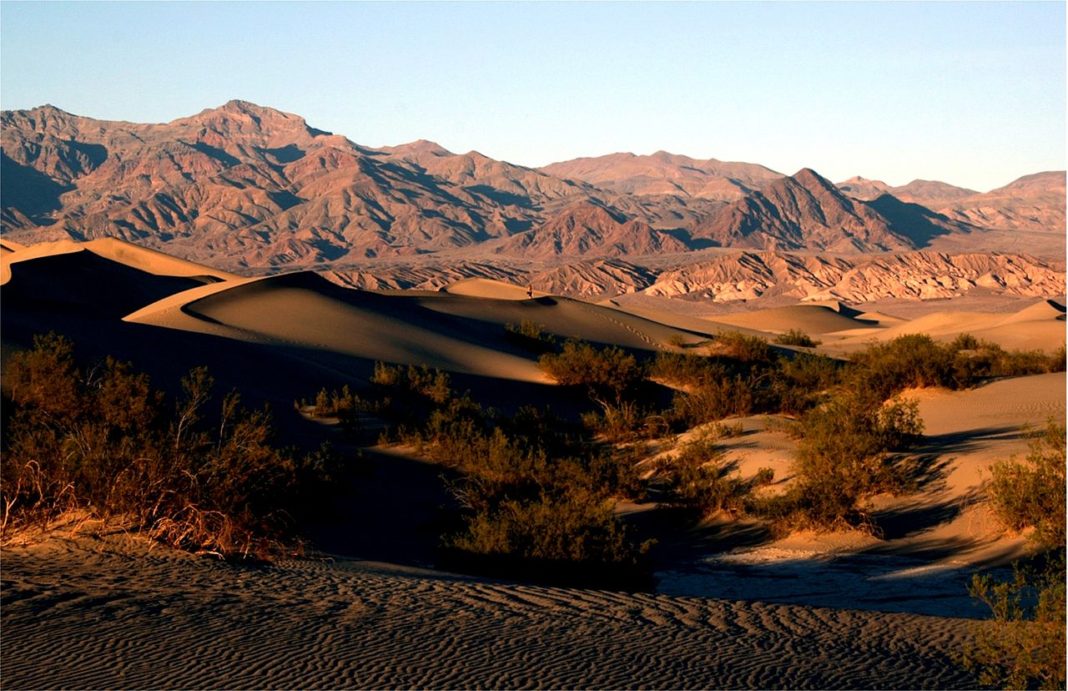Death Valley is a desert valley in Eastern California, in the northern Mojave Desert, bordering the Great Basin Desert. During summer, it is thought to be the hottest place on Earth.
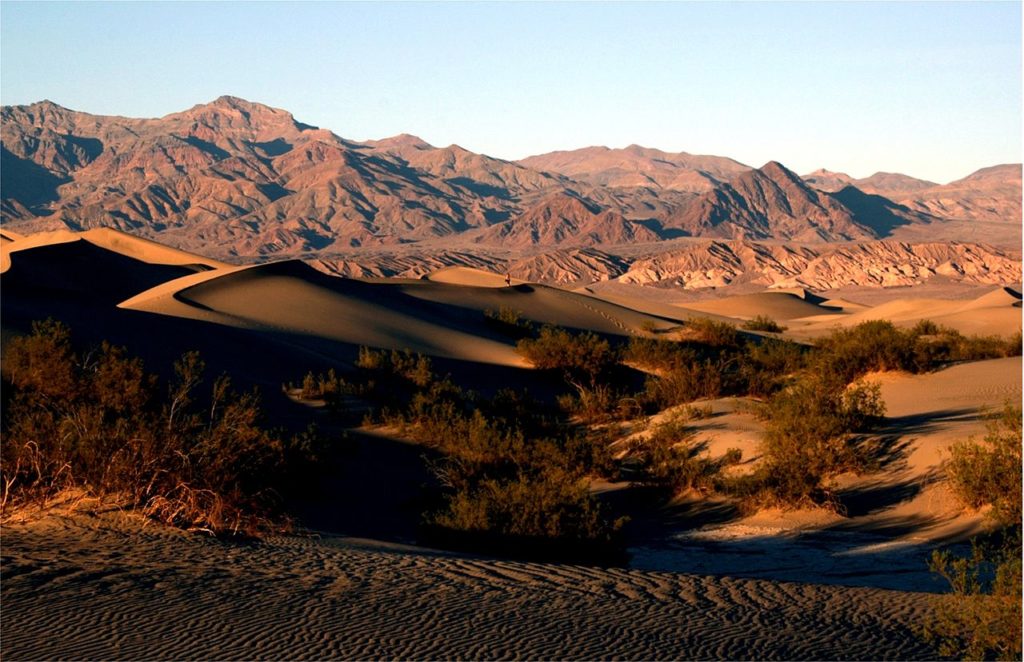
Death Valley is a graben—a down-dropped block of land between two mountain ranges. It lies at the southern end of a geological trough, Walker Lane, which runs north to Oregon. The valley is bisected by a right-lateral strike-slip fault system, comprising the Death Valley Fault and the Furnace Creek Fault. The eastern end of the left lateral Garlock Fault intersects the Death Valley Fault. Furnace Creek and the Amargosa River flow through part of the valley and eventually disappear into the sands of the valley floor.
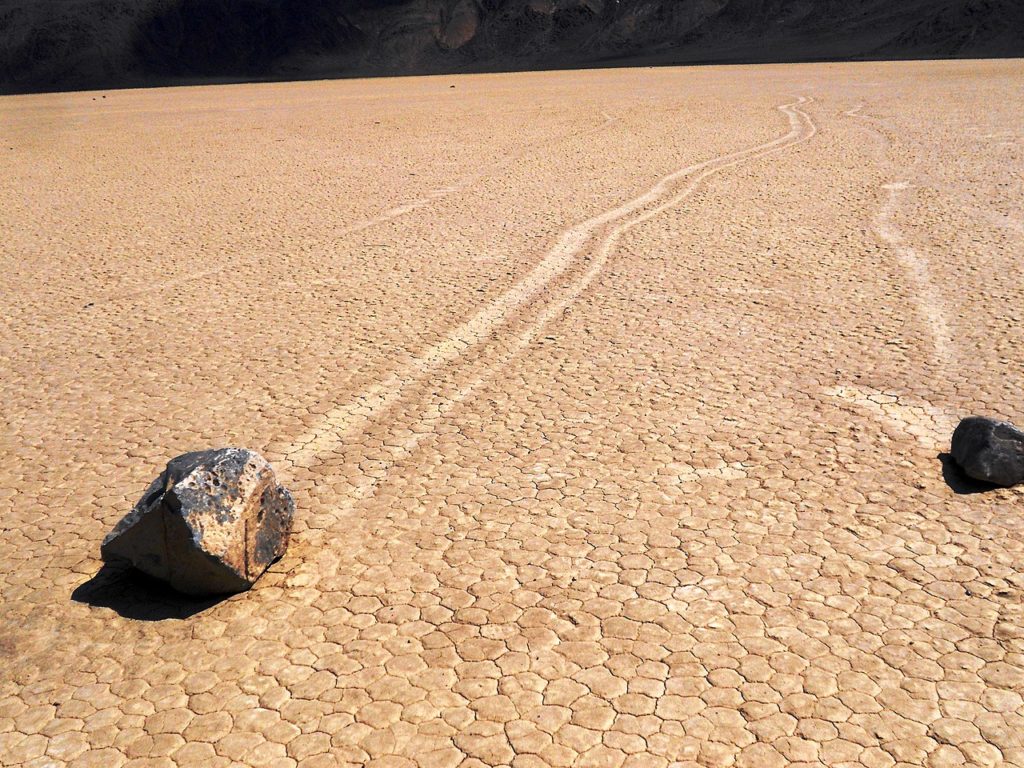
The rocks of Racetrack Playa are composed of dolomite and syenite, the same materials that make up the surrounding mountains. They tumble down due to the forces of erosion, coming to rest on the parched ground below. Once they reach the level surface of the playa, the rocks somehow move horizontally, leaving perfect tracks behind them to record their path.
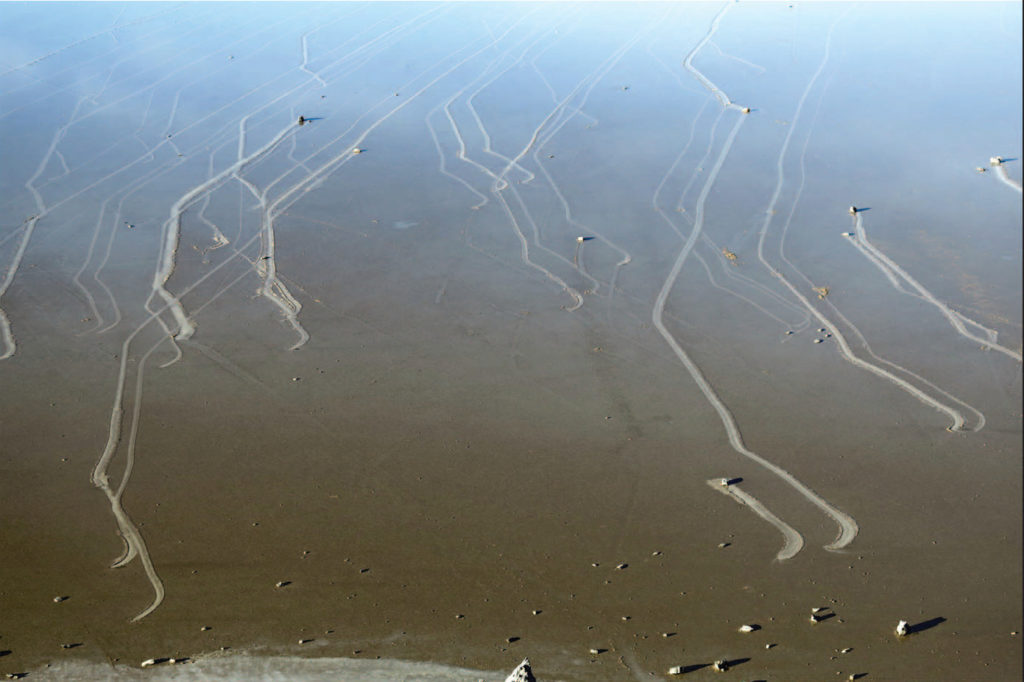
Many of the largest rocks have left behind trails as long as 1,500 feet, suggesting that they’ve moved a long way indeed from their original location. Rocks with a rough-bottomed surface leave straight tracks, while smooth-bottomed rocks tend to wander. The sailing stones have been observed and studied since the early 1900s, and several theories have been suggested to explain their mysterious movements.
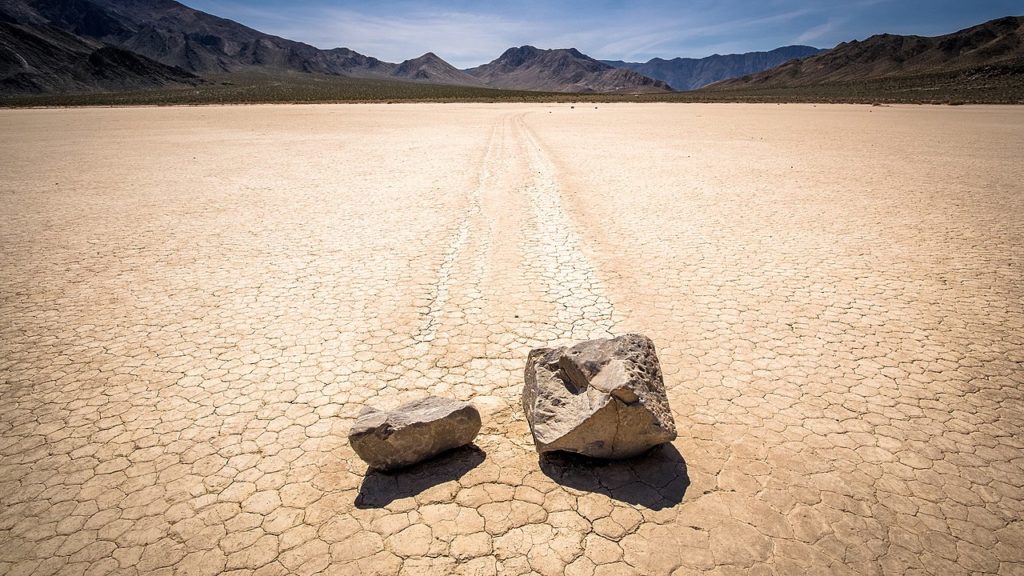
In 2014, scientists were able to capture the movement of the stones for the first time using time-lapse photography. The results strongly suggest that the sailing stones are the result of a perfect balance of ice, water, and wind. In the winter of 2014, rain formed a small pond that froze overnight and thawed the next day, creating a vast sheet of ice that was reduced by midday to only a few millimeters thick. Driven by a light wind, this sheet broke up and accumulated behind the stones, slowly pushing them forward.
According to the Internet





